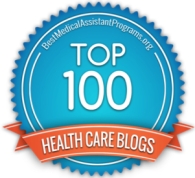Whether a Chief Financial Officer is running the fiscal operations of a hospital system, an insurance company or a company that simply employs individuals with health coverage, the decision-making process for sustainability is changing at a rapid pace. However, after years of hearing about reformation in the health system, broad, sweeping and revolutionary changes are finally happening. Major shifts are also occurring in the population, as well as technological advances that will disrupt the entire premise of a four-walled institution for care and the very model we use for health delivery.
Health care in the US is a business – a multi-billion dollar business – and understanding the financial implications of health reform will make or break every CFO. Knowing that health access, demand, quality and payment changes are inevitable there is an immediate need for CFOs across the ecosystems to embrace and plan for transformation.
- You have too many beds.
While many hospital leaders won’t accept this at face value due to lengthy wait times, surgical demands and desire to shift beds, the truth is there are too many beds in a lot of hospitals. Between transferals to the outpatient setting and telemedicine, the need for expensive inpatient beds is declining. Additionally, hospital leadership are increasingly finding that they face problems with state authorities when they apply to move beds. Most recently at the University of Chicago, where 338 beds were being used for a 304-person utilization pattern, the state rejected a University application to move surgical beds. - Food, housing and transportation of patients is your problem.
As Americans begin to define and attempt to tackle community and population-based care, the access individuals have to quality food, affordable housing and efficient transit matter. No one living in a food desert will have the same health outcomes as someone living next door to a Whole Foods, just as an individual with a new car will always be more consistent in making appointments and picking up prescriptions than someone who has to access three public transit buses for the same activities. Real patient engagement and activation begins with understanding the environment of each patient. - Your patient demographics are shifting, and so too should your leaderships. As the US continues to brown, hospital leadership must be representative of the population to understand and meet need. At a recent Modern Healthcare Top 25 Minority Executives session, an awardee remarked that the United States is now a country of minorities, and “our leadership as minorities is our future for health outcomes.” With this in mind, it is inevitable and paramount to success that the leadership of any organization resembles and represents those it serves, so it makes the financial investments and decisions that influence the community.
- More bodies in beds will never work again.
Value-based purchasing means that a warm body in a bed not only drives costs higher for the payer, but that the longer a patient remains in the hospital – or the more often they return – the more penalties that accrue. Therefore, the goal should not be for more bodies, but for cost-effective bodies. Depending on the community serviced, this can mean desire for more Masters Athletes, specialized services or elective services. Additionally, as we shift to a world where technology enables more clinical procedures and recovery to be done in the outpatient setting, or at home, and expensive inpatient procedures decrease in volume and reimbursements, hoping to fill beds is futile. - Alignment with physicians is nonnegotiable.
No leader can effectively attain a goal without buy in from those who carry out the work. However, it is important to be aware that “physician alignment” is a term that causes almost all physicians to turn and walk the other direction out of fear that this indicates buying their autonomy and dictating their day-to-day, moment-to-moment ability to practice. According to Healthcare Financial News the implications of physician behavior are so important in 2014 that more revenue than ever will be spent recruiting physicians who see the world the same way you do, which is not very different from how corporation CFOs think about their employee hires. - As consumers take on more and more pay responsibility, unexpected payment shifts will keep occurring.
Many experts estimate that defined contribution, health insurance exchanges and the growing individual health insurance market means that patients will become more informed about spending their health care dollars, and therefore, more unwilling to spend. The future of reimbursements and pricing strategies is presently a puzzle wrapped in an enigma because of extreme uncertainty. However, it is general knowledge that Medicare and Medicaid reimbursements are going to continue decreasing, with the American Hospital Association and Moody’s already estimating an, “unequivocally negative” outlook for hospitals on the reimbursement fronts. - Technology and data utilization can save you money.
While the learning curve with new technology can be excruciating and the meaningful utilization of collected information seems daunting, everything from workflow to health activities and employee/patient engagement can be monitored – and altered in real time – using new technology. Moreover, the more information that is known today, the better predictive analytics and behavioral change that can be made tomorrow. However, as the amount of technology available to leadership continues to grow exponentially, the purchasing of new tech will be a balancing act between what is a passing fad versus what is sustainable and transferable. - Your EHR is going to cost you. Big time.
Now this seems obvious to most hospital CFOs, as they have already seen the initial price tags that come with implementing a “holistic” electronic system. However, the most costly elements may not yet be realized. As mergers and acquisitions continue, technology advances and EHR capabilities increase, the need to refresh systems will continue. At present there is not one system that meets end-to-end patient or provider needs, leaving the ecosystem open for further disruption, which inherently includes more interoperability, more upgrades, more plugins and more costs.

